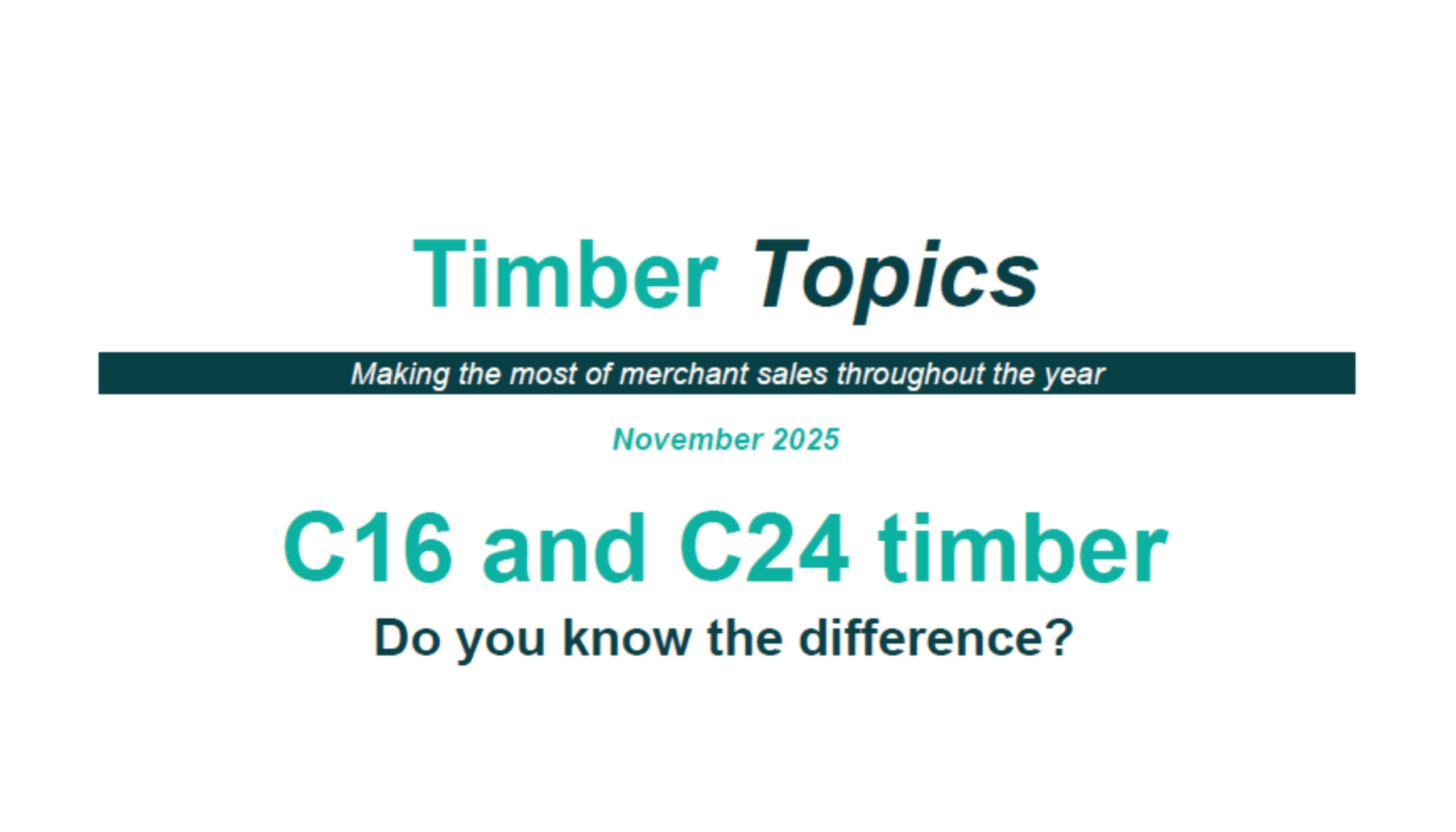
C16 and C24 are the two main strength classes of structural softwood timber available in the UK. In fact, they are just two of the 12 strength classes used throughout Europe, as defined in British Standard BS EN 338. All softwood structural timber starts life as a coniferous tree like spruce or pine – hence the “C” for “coniferous”. The number is just shorthand for the defined bending strength of that strength class: C16 for 16N/mm2 and C24 for 24N/mm2.
Having a structural timber supply chain based on C16 for general constructional applications and C24 where higher strength or longer spans are required is the most efficient, but to be truly efficient we need to use all available products – and that includes both C16 and C24 timbers.
In the UK coniferous trees like spruce grow very fast, creating excellent structural timber at strength class C16 that is suitable for most general construction applications like structural framing and cut roof timbers. Coniferous trees in colder climates grow more slowly, producing a higher proportion of timber that meets the properties of strength class C24 – which makes great longer-span floor joists or rafters.
Most C16 and C24 timber sold in the UK is kiln-dried to reduce its moisture content and surface finished to make each piece easy to handle and stable for use in building projects. This means all structural timber will have a good appearance that’s more than sufficient for most general structural applications that are hidden from view behind decorative finishes, up in the loft or under the floorboards.
C24 timbers have fewer strength-reducing features, such as knots, and so may appear more visually appealing than C16. Some merchants are also stocking C24 timbers specially selected for their visual appearance. These do not have a higher strength classification than other C24 timbers, but claim to present better and may be worth a price premium to some buyers.
It’s important to remember that a strength class does not infer any specific level of durability, and every piece of structural timber must carry a strength-grading mark to identify its strength class and source. Any timber that is not clearly marked on each piece to show its strength class should not be purchased for use in structural applications.

 Find Your
Find Your